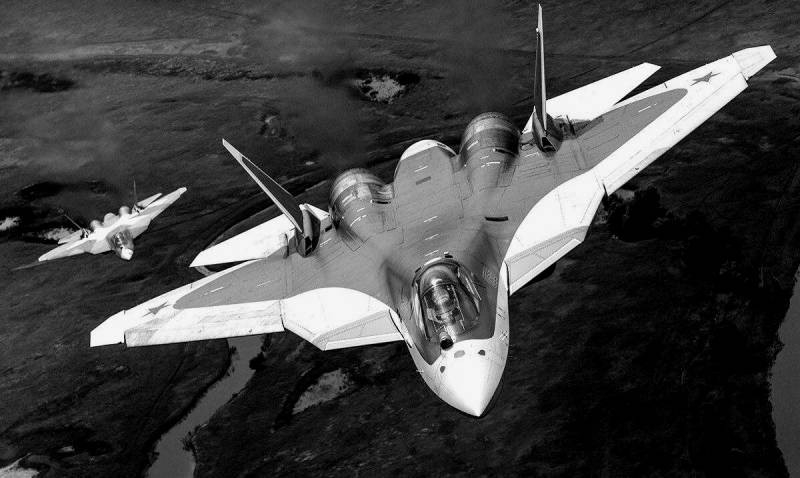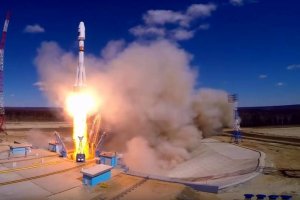
As is known, the criterion "cost-effectiveness" is one of the primary indicators, providing experts and knowledgeable observers with the opportunity to assess the degree of success of the program for the development of one or another model of promising military equipment, as well as predict the future positions of its export modification on regional and global arms markets. Meanwhile, to carry out this kind of analysis, an expert should have information not only about the average cost of a product., but also about the "optional package", assigned to this product under contracts, concluded with foreign customers.
Against this background, the assessment of the export potential of the domestic multifunctional fifth generation fighter Su-57E in comparison with the American promising stealth fighter F-35A "Lightnung II", especially since the Russian-Egyptian contract for the supply of the Algerian Air Force 14 machines, concluded between the defense department of this North African state and Rosoboronexport at the end of December 2019 of the year, ready for implementation, and the acquisition of operational combat readiness by the first serial Su-57 of the "first stage" for the Russian Aerospace Forces will take place by July 2020 of the year.
The potential of the onboard radar "Irbis-E" is not colossal, but quite acceptable for competitive confrontation
As reported by the publication "Military Parity" with reference to anonymous informed sources, The "optional package" of the Su-57E being prepared for export sales will differ markedly from the radio-electronic "stuffing" of the combatant Su-57 of the Russian Aerospace Forces. In particular, The "heart" of the onboard radio-electronic equipment of export vehicles can be an onboard radar with a passive HEADLIGHT N035 "Irbis-E", installed on multipurpose fighters of the 4 ++ generation Su-35S, while the modification for the Aerospace Forces will have a promising multi-module airborne radar complex with AFAR N036 "Belka", presented by the X-band antenna array of the forward looking H036, side-looking antenna arrays N036B-1-01L and N036B-1-01B (centimeter X-range of work), as well as antenna modules of the meter L-wave band Н036L-1-01, integrated into the wing tips of the Su-57.
Unlike AFAR-radar AN / APG-81, developed by the "Electronic Systems" division of the military-industrial company "Northrop Grumman" to equip the F-35A fighters, as well as radar Н036 "Belka" (Sh-121) from NPP "Istok" and NIIP them. VV. Tikhomirova, having transmit-receive modules with individual gallium nitride low-noise microwave transistors (amplifiers) and attenuators (attenuators) in the architecture of transmit-receive paths, onboard radar with passive HEADLIGHT N035 "Irbis-E" boasts only one transmitter based on a traveling wave lamp, powering a specific group of transmit-receive modules through phase shifters. As a result, the "Irbis-E" radar is unable to form a flexibly simulated radiation pattern with spatial "dips" in the direction of the enemy radio-electronic jammers (aircraft electronic warfare EA-18G "Growler", as well as aircraft carriers of electronic warfare containers AN / ALQ-249 NGJ-MB), in connection with which the level of its noise immunity will be noticeably lower, rather than lightning radar and squirrel.

"Right deviation" of the state corporation "Roscosmos"
Furthermore, "Optional package" of F-35A multirole fighters in the "Block 4+" modification (as for the USAF, and for export sales) provides for the introduction of an electronic warfare mode in the AN / APG-81 airborne radar, what will be achieved by updating the weapons control systems software with loading software add-ons, providing the use of radio frequency tunable filters RFTF (Radio Frequency Tunable Filters), integrated into the architecture of the APG-81 transmitting path and powering certain arrays of transmit-receive modules. Thanks to this, the APG-81 station will be able to form a narrow high-energy "jamming beam" in the form of targeted response, as well as imitation noise, significantly reducing the effective detection range of radars based on Cassegrain antennas, waveguide-slot antenna arrays, as well as passive PAR. "Irbis-E" with a similar groundwork, Unfortunately, does not have.
Nevertheless, unique energy potential of "Irbis-E" (peak power of the order of 20 kW and power in the "precise target tracking" mode of the order 2 kW), providing target detection range of the "F-35A" type (EPR 0,2 quarter. m) more 200 km, can still give odds to any Western European or American airborne radar (especially when the enemy uses medium-intensity radio-electronic interference). For example, the same AN / APG-81 are able to track the Su-57E (EPR about 0.2-0.3 sq.. m) at a distance of no more than 120-130 km, and this is in a noise-free environment! When the pilot activates the "drying" of the onboard complex of electronic warfare "Himalayas", this indicator will decrease to 110 or 100 km.
At about the same distance, the Irbis-E radar will detect the F-35A, whose pilot uses the APG-81 onboard radar in the radio countermeasure mode. That is, in a duel situation, due to hypothetical long-range aerial combat, Su-57E with N036 radar and state-owned F-35A will have approximately equal chances of establishing air superiority, especially given the fact, that the program for the development of a promising long-range air combat missile "Product-180" with a "long-playing" dual-mode solid propellant rocket has entered the final stage.
This solid propellant, having a specific thrust impulse of more 265 from, will provide "Product 180" with high speed and power qualities (and therefore, and the ability to perform intensive maneuvers during target interception) even at the terminal section of the trajectory, located 130-140 km from the vanishing point from the Su-57E in-fuselage suspension unit. As a result, the export "drying" of the 5th generation is able to establish a stable parity even with those F-35A, which in the future will be equipped with "long-range" missile missile systems MBDA "Meteor" with integral direct-current rocket engines.
Eugene Damantsev











